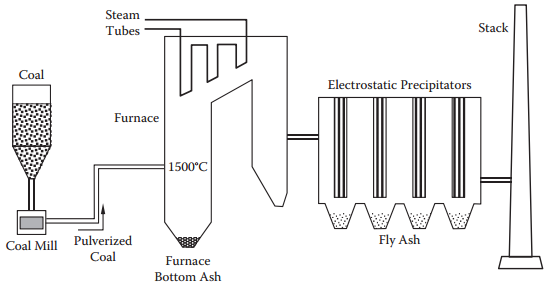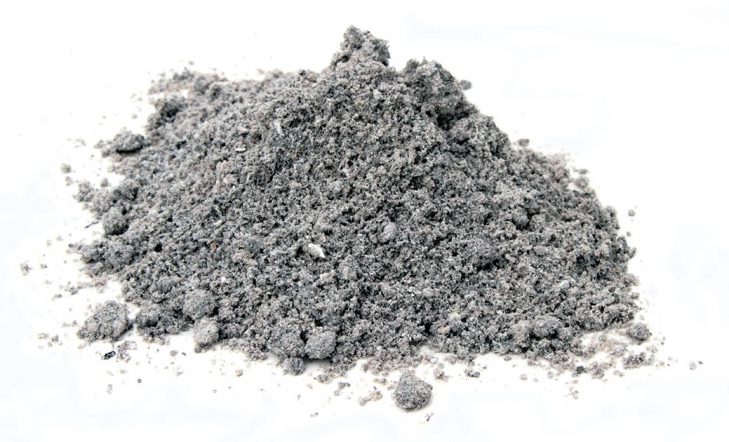In this article named “Production of Fly Ash“, the process of fly ash production will be discussed briefly.
Fly ash is a by-product of burning coal in an electrical generating station. The following figure shows a typical layout of a coal-burning generating station.

Coal is first pulverized in grinding mills before being blown with air into the burning zone of the furnace. In this zone the combustible constituents of coal (principally carbon, hydrogen, and oxygen) ignite, producing heat with temperatures reaching approximately 1500°C. At this temperature the noncombustible inorganic minerals associated with the coal (such as quartz, calcite, gypsum, pyrite, feldspar, and clay minerals) melt and form small liquid droplets. These droplets are carried from the burning zone with the flue gases and cool rapidly, forming small spherical glassy particles as they leave the chamber. These solid particles are collected from the flue gases using mechanical and electrical precipitators, or baghouses. The particles of ash that “fly” away from the furnace with the flue gases are called fly ash, and this material can be used as an SCM in portland cement concrete. Fly ash is also called pulverized fuel ash (PFA) in some countries. Heavier unburned ash particles drop to the bottom of the furnace, and this material is termed bottom ash or furnace bottom ash; such material is not generally suitable for use as a cementitious material for concrete, but is used in the manufacture of masonry block.
